We may earn commissions when you buy from links on our site. Why you can trust us.
Review: Roborock's Set-and-Forget S7 MaxV Ultra Robotic Floor Cleaner
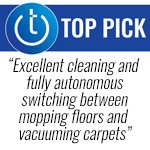 The promise of a robotic floor cleaner is that it will take care of the cleaning for you. Unfortunately, the reality has been far from it, especially for mopvacs, which wash and vacuum your floors. The problem was the mop head, which you had to manually clean between runs. This year, we're finally seeing fully-autonomous mopvacs, namely the Techlicious Top Picks CES 2022 winner Roborock S7 MaxV Ultra. This new mopvac empties and cleans itself and can run for up to two months without user intervention.
The promise of a robotic floor cleaner is that it will take care of the cleaning for you. Unfortunately, the reality has been far from it, especially for mopvacs, which wash and vacuum your floors. The problem was the mop head, which you had to manually clean between runs. This year, we're finally seeing fully-autonomous mopvacs, namely the Techlicious Top Picks CES 2022 winner Roborock S7 MaxV Ultra. This new mopvac empties and cleans itself and can run for up to two months without user intervention.
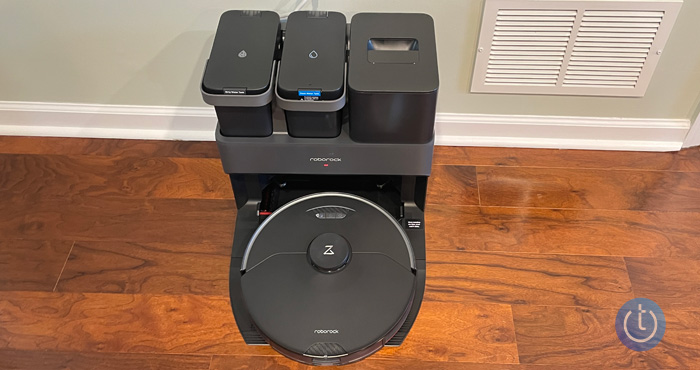
Roborock S7 MaxV Ultra docked in its base.
What makes this mopvac part of a new category of cleaners is the dock which, once you set it up, does all the hard work. It takes up more space than previous auto-empty docks, but it does a whole lot more. It has tanks for clean and dirty water, as well as one that can hold up to two months' worth of dirt and debris. The dock also washes the mop pad for you; think of it as a mini-car wash for your robot floor cleaner.
In the last six months, I've tested more than a dozen current generation robot vacs and mopvacs alongside the S7 MaxV Ultra. I found the S7 MaxV Ultra to be a top-tier cleaner with strong suction power for vacuuming and a mop that does not leave messy streaks.
The biggest pain points for the current generation of robot vacuums are an inability to properly map a home and poor object detection. This next generation robot fixes those issues with the latest in advanced AI object detection and laser mapping, enabling it to reach more areas with fewer instances of getting stuck or mistakenly going over a carpet.
No one really needs a more than $1,000 robot house cleaner, especially a first version of a next-gen product. However, the S7 MaxV Ultra ($1,399.99 on Roborock, check price on Amazon) is an excellent next-gen robot floor cleaner if you want a virtually hands-off experience and have the money to splurge.
Design of the Roborock S7 MaxV Ultra
The biggest downside of this autonomous mopvac robots is the size of the dock. It is massive. It takes up a lot of space at 16.5 inches tall and 19.4 inches wide, and the 16.6-inch depth means it sticks out pretty far in the room. For comparison, my self-emptying iRobot vacuum is 13 by 12 by 14. So, ensuring you have enough space for the base should factor into your decision making.
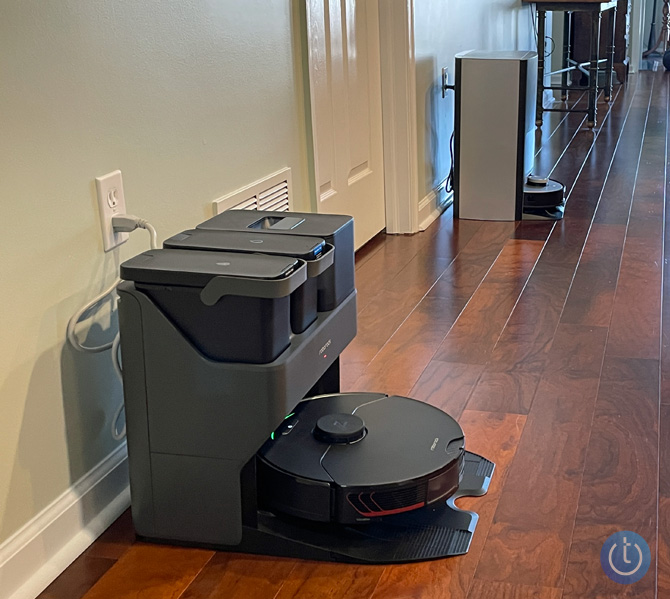
While the Roborock S7 MaxV Ultra is large, you can see its closest competitor, the Ecovacs Deebot X1 Omni ($1,549.00, on sale for $1,049 on Ecovacs) in the background is also huge at 16.9 by 17.6 by 22.7 inches.
The base is large because it houses the three removable containers needed to keep things clean. There's one for holding debris emptied from the vacuum, one for clean water to refill the robot's water tank, and one for the dirty water that comes from cleaning the mop pad. The dock comes with one 2.5-liter dust bag in the container and an extra one in the box. You can order more when needed from Roborock's website (three for $18.99).
The Ultra Empty Wash Fill Dock is also rather unattractive, like having a huge piece of black plastic on the floor. The top is open, so the three tanks are exposed rather than hidden away. (They're hidden away in the Deebot X1 Omni’s base as you can see above.) Yes, this makes it easier to access them, but I'd rather have to open a lid than look at them. In addition, the water tanks are not see-through either, so to check the water levels, you need to pull them out and open them up to see inside.
I had a difficult time with the power cord in the back, which is very thick and long, and there's not enough space behind the dock to coil it, so it couldn't push as far back to the wall as I would like.
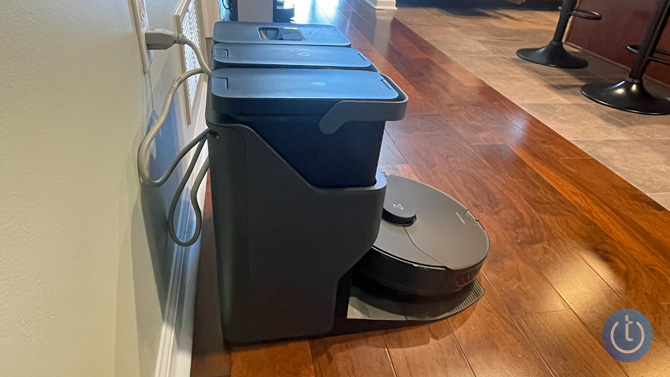
Setting up the Roborock S7 MaxV Ultra
Setting it up is the same experience as any other robot cleaner, where you need to let the robot map your whole house. Having tested dozens of these, I was amazed at how little time (and frustration) it took to map my house, especially having recently tested 12 of the latest units to see how they compare. The S7 MaxV Ultra was one of the fastest and most precise mapping experiences I had.
While previous models took hours, sometimes days, and several passes throughout the house to complete the mapping run, the S7 MaxV Ultra completed the task in about 20 minutes. The combination of Lidar navigation and an onboard camera helped create a virtual map of my house, even labeling certain rooms as "bedroom" and "kitchen." Of course, you can relabel individual rooms and even add furniture in the app.
A precise map of your home is what enables the robot to be autonomous and precise when cleaning. Once you've created and labeled your rooms, you can set specific cleaning schedules for individual rooms. For instance, because the cat litter that gets stuck in my cat's paws always seems to accumulate on my floors, I set a schedule for it to automatically vacuum the guest bathroom (where the cat litter is) as well as the front entryway, and have it run each morning.
If you live in a multi-level home, you can save up to four maps, and the robot will recognize what floor it's on when you set it down and put it to work.
Using the Roborock S7 MaxV Ultra
Obstacle Avoidance
This next generation of robot floor cleaners is clearly superior to others I tested in its ability to avoid obstacles. The S7 MaxV Ultra uses Roborock's ReactiveAI 2.0 Obstacle Avoidance System in combination with an RGB camera and a light scanner (placed on the front of the robot) to identify and avoid a lot more objects than previous robot vacuums. It uses a new neural processor to recognize obstacles and know whether it should clean around them. In my testing, it went around furniture and avoided cat toys and power cords well. It tried to go up onto my bathroom scale and knocked into the cat food dishes a few times, so I easily created no-go zones in the app to make sure the robot avoided them in the future.
Roborock says the new technology enables the robot to detect and avoid dog poop, something just a few robotic vacs can do. I didn't try poop, but I did try shoes, cables, and other objects and was impressed with how much better the object detection was compared to the other robot floor cleaners I've tried. It was right up there with my previous favorite robot vac, the iRobot Roomba j7+ ($799.99, check price on Amazon).
Vacuuming Power
Roborock has upped the suction power in the S7 MaxV Ultra with 5100Pa of high-power suction, which puts it at the top of robovacs and is stronger than any other robot I tried. The Deebot X1 Omni has 5000Pa, and most other robot vacuums top out at about 4,000Pa.
All that suction power means it does quite well picking up cat hair and dust from carpeting and hardwood floors. In addition, it has enough power to easily transition from flooring to carpeting and get over door saddles, another pain point for lower-powered robots.
Mopping Effectiveness
The S7 MaxV Ultra's mopping capability is very good – better than existing robot mops – but not quite as good as the Deebot X1 Omni. The Deebot X1 Omni has dual spinning mop pads. The S7 MaxV Ultra uses sonic vibration technology (3,000 per minute per the specs) to scrub the floor instead of just wiping, and I found that it did make my hardwood floors shine. It mopped the whole width of the pad on each pass and didn't leave any streaks or lines on the floor, an issue I saw with other mopping robots. In testing other robot mops, I've found most to be as effective as dragging a wet Swiffer across the floor, which means it sometimes just slides the accumulated dirt along the floor as it goes and doesn't always yield the desired result.
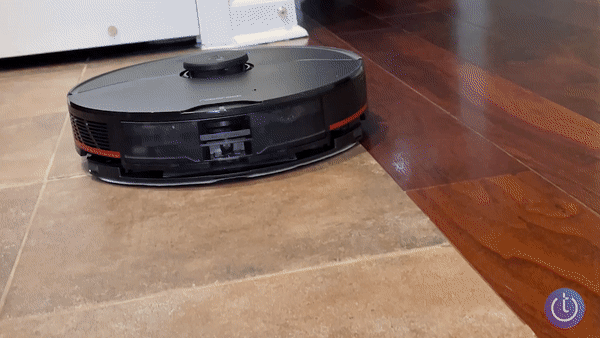
Another great feature: unlike many other smart robots (including the Deebot X1 Omni) you don't need to swap out the dust bin for a water tank when you want to mop the floors. Instead, you simply attach a mopping bracket onto the bottom of the S7 MaxV Ultra, and it draws water from the internal tank. This setup allows it to mop and vacuum in one run – no manual intervention is needed for weeks at a time.
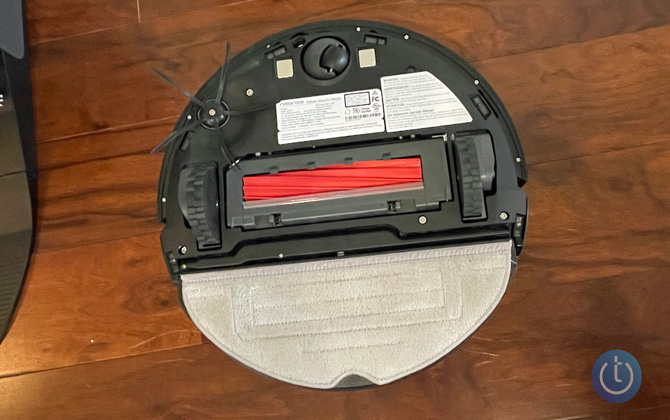
Most hybrid robots have a carpet sensor that helps them avoid carpeting when on a mopping run. Since the S7 MaxV Ultra can go from vacuuming mode to mopping mode during a single run, it can switch off the mopping when it senses carpet. Called VibraRise, the unique technology lifts the mopping plate about 5mm so it can vacuum your carpets without mopping them at the same time. In vacuum mode, the robot automatically increases its suction power. It lowers the mop pad and resumes mopping when it senses hard flooring. In theory, this is great, but there were instances when I found my carpeting to be slightly damp. It's only lifting about 5mm (difficult to detect with your eye), so if your carpeting is taller than 5mm, it's best to avoid mopping and vacuuming simultaneously.
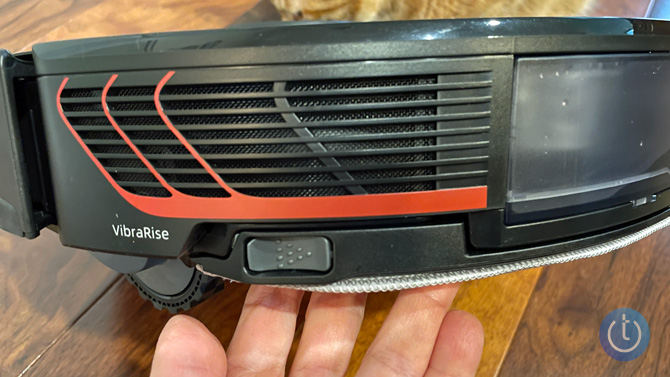
Most robot mops recommend using only water for mopping, but the S7 MaxV Ultra can use Roborock's branded floor cleaner, which you can buy on Amazon for under $20. I tried it, and it was very effective in cleaning and didn't leave streaks on hardwood floors as some others did.
For comparison, the Deebot X1 Omni uses only plain water in the tank – no cleaning solution – and requires separate mopping and vacuuming runs of the house. That's because the Deebot X1 Omni avoids carpeting completely. Instead, it will get right to the edge, sense the carpet, and turn to try to go around it. If you're concerned about your carpets getting wet, you might prefer this trade-off for better peace of mind.
Security Camera
Since these new robots use cameras to help with mapping and obstacle detection, they can now do double duty as a security camera with two-way talk capability through the mobile app. I don't find this feature particularly useful (it's turned off by default). Still, if you don't have a standalone security camera and want to view your home while you're away or perhaps check on the cats, you'll see a pretty clear picture of the house.
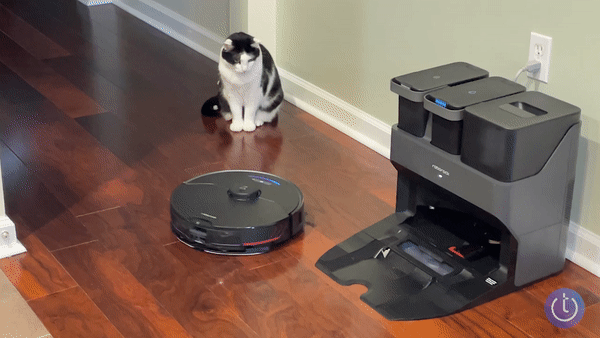
If you're worried about privacy, it doesn't record, it's livestream only, and it loudly announces "remote viewing is enabled" when it's on, so there's no possibility of surreptitiously monitoring someone.
Using the Roborock app
A robot floor cleaner is only as good as its accompanying app allows it to be. I've seen great cleaners with confusing and limited apps, which is a deal breaker. None of the apps is perfect, but Roborock's is among the best in terms of ease of use and functionality.
The Roborock app (free for iOS and Android) is intuitive. Creating a map of my house was easy, and the app goes so far as to show the type of floor in each room so that I see a plank floor in my hallways and living room, carpeting in the bedrooms, and tile in the bathroom. It does this so that when I set a cleaning job, I can change the intensity of each action on a room-by-room basis. For example, I can ask it to vacuum in one room and mop in another, setting the cleaning mode in each. Creating no-go zones was simple, and I could add furniture in specific rooms to let the robot know what to avoid.
The app supports a variety of cleaning options that you can set in individual rooms, as opposed to having the whole cleaning run use that setting. For example, you can select mop scrub intensity (mild, moderate, or intense) in the kitchen and then choose a suction power (Quiet, Balanced, Turbo, or Max) for the living room carpeting.
When the S7 MaxV Ultra runs low on battery, it returns to the base to recharge and clean the mop pads if used. Like other robots, once charged up again, it continues where it left off. This works great, except when you've forgotten it was recharging, and it wakes you at 2 AM to continue the cleaning process. I loved the Do Not Disturb feature in the app, which tells the robot not to run during specific times you set.
The robot is controlled through the mobile app, a manual button, or using your voice with an Amazon Alexa or Google Assistant smart speaker. I paired mine with Alexa and was able to use basic voice commands to start cleaning or return to the dock. If you want to tell it to start cleaning a specific room, you can do that in the app.
Another useful feature is Pin and Go, which lets you choose a specific spot in the app, and the robot will head there for a spot clean.
Cleaning the Roborock S7 MaxV Ultra
Depending on your cleaning habits, once you've completed setup, you should get around two months of hands-free use before needing to refill the water supply or empty the bag in the dust bin. However, you might want to change out the dirty water more frequently. I did after a week, worried it might start smelling, though I didn't experience that. The bins are easy to access and clean in the sink and are labeled, so you know what goes where.
It's in the dock that the mopvac cleans itself. Each time the robot returns to the dock, it empties the robot's dust bin and washes the mop pads if it's been on a mopping run, extracting the dirty water into the proper container and refilling it with clean water.
Watching the full process was fascinating. Before it even left the dock, the robot washed the mop pad, filled the tank with water, and then announced it was ready to mop. It mopped the floor in an incredibly linear fashion and got stuck only once under my refrigerator and needed to be rescued.
When it was done, it returned to the self-emptying base and backed in so the mop pads could be washed. It was a cross between a gurgling sound and a coffee grinder sound, and then another gurgling sound, like water was being extracted. It went through a few periods of grind and gurgle and then announced that it would dock. The robot came out and away from the base, turned itself around, and then re-entered so that the charging sensors would line up. Once it was docked, it emptied the dustbin and started charging. The whole process took about three minutes.
When the robot is charging, the back end is lifted slightly so the mop pad can air dry between cleanings. That gave me the option of keeping the mop pad on rather than removing it after each run, which you need to do on previous models. In contrast, the Deebot X1 Omni dock uses an electric heating system to dry the mop pad.
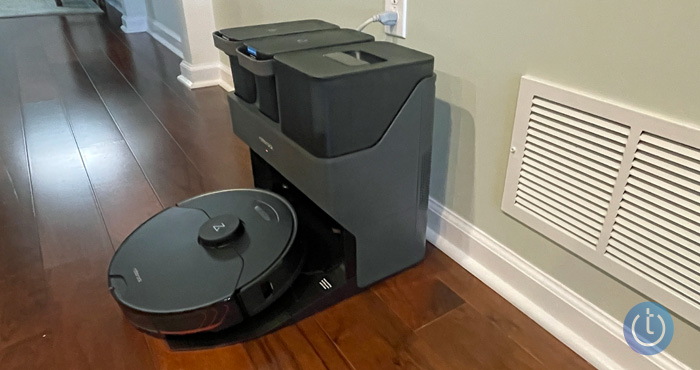
After a few mopping runs, I washed the mop pad by hand in a sink, and there was very little dirt runoff. If you don't want to hand wash, you can also throw it in the washing machine. However, I wouldn't recommend putting the pads in the dryer.
The bottom line
If you're looking for the most autonomous cleaning robot, this next generation Roborock is the best I've tested. For those with pets and low pile carpeting who want a robot with a powerful vacuum that also mops really well, the Roborock S7 MaxV Ultra ($1,399.99) is expensive but worth it. It takes very little user intervention giving you the luxury of a "set it and forget it" robot.
If you're concerned about your carpets getting a little damp, I highly recommend looking at the Ecovacs Deebot X1 Omni ($1,549.00, on sale for $1,049.00). It has a more stylish design, takes up less space, and does an outstanding job avoiding carpeting altogether. However, you'll have to manually switch out the tanks and set your mopping and vacuuming runs separately, reducing the usefulness of the advanced features.
[Image credit: Andrea Smith/Techlicious]
Andrea Smith is an award-winning technology broadcast journalist, reporter, and producer. Andrea was the Technology Producer and an on-air Technology contributor at ABC News for over two decades before becoming the Lifestyle Channel Editor at Mashable, where she explored the ways in which real people, not just geeks, began using technology in their everyday lives.















